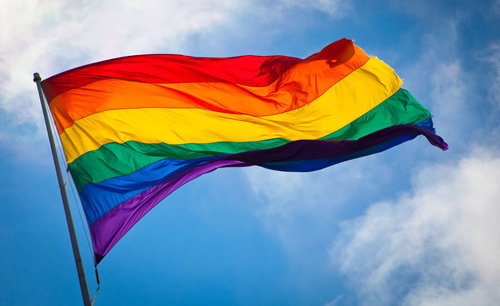

THE FACTS:
STUDENTS WITH DISABILITIES ARE MUCH MORE LIKELY TO BE BULLIED THAN THEIR NONDISABLED PEERS:
- Only 10 U.S. studies have been conducted on the connection between bullying and
developmental disabilities. - All of the studies found that children with disabilities were two to three times
more likely to be bullied than their nondisabled peers. - One study shows that 60% of students with disabilities report being bullied regularly.
- Kids with needs such as epilespy or food allergies, also may be at higher risk of being bullied.
This bullying can include making fun of kids because of their allergies or exposing them to the
things they are allergic to. In these cases, bullying is not just serious, it can mean life or death.
BULLYING BASED ON A STUDENT'S DISABILITY MAY BE CONSIDERED HARRASSMENT:
- Office for Civil Rights and the Department of Justice have stated that bullying may also
be considered harrassment when it is based on a student's race, color, national origin,sex, or disability.
THE FEDERAL LAWS - DISABILITY HARASSMENT IS A CIVIL RIGHTS ISSUE:
- Parents have legal rights when their child with a disability is the target of bullying
or disability harassment. - Section 504 of the Rehabilitation Act of 1973 and Title II of the Americans with Disabilities Act of
1990 are the federal laws that apply if the harassment denies a student with a disability an equal opportunity
to education. - Office for Civil Rights enforces Section 504 and Title II of the ADA. Students with a 504 plan or an
Individualized Education Program would qualify for these protections.
CREATING A SAFE ENVIRONMENT FOR YOUTH WITH DISABILITIES:
- Special considerations are needed when addressing bullying in youth with disabilities.
- Often have individualized education programs or section 504 plans that can be useful in
crafting specialized approaches for preventing and responding to bullying.
CREATING A SAFE ENVIRONMENT FOR YOUTH WITH SPECIAL HEALTH NEEDS:
- Youth with special health needs - such as diabetes requiring insulin regulation, food allergies, or youth with
epilepsy - may require accommodations at school. - Do not require an individualized education program or section 504 plan.
- Schools can protect students by educatiing kids and teachers about student's special health needs
and the dangers associated with certian actions and exposures can help keep kids safe.
BULLYING AND LGBT YOUTH:
Lesbian,gay,bisexual, or transgender youth and those perceived as LGBT are at an increasd risk of being bullied. There are
important and unique considerations for strategies to prevent and address bullying of LGBT youth.
CREATING A SAFE ENVIRONMENT FOR LGBT YOUTH:
It is important to build a safe environemtn for all youth, whether they are straight or LGBT. All youths can thrive
when they feel supported. Parents, schools, and communities can all play a role in helping LGBT youth feel physically
and emotionally safe:
- Build a strong connections and keep the lines of communication open. Some LGBT youth often feel rejected. It is
important for them to know that their families, friends, schools, and communities support them. - Establish a safe environment at school. Schools can send a message that no one should be treated differently because
they are, or are perceived to be, LGBT. Sexual orientation and gender identity protection can be added to school policies. - Create gay-straight alliances (GSAs). GSAs help create safer schools. Schools must allow these groups if they have other
"non-curricular" clubs or groups. Learn more about the right to form a GSA under the equal access act. - Protect privacy. Be careful not to disclose or discuss issues around being LGBT with parents or anyone else.
FEDERAL CIVIL RIGHTS LAWS AND SEXUAL ORIENTATION:
Federal civil rights laws do not cover harassment on sexual orientation. Often, bullying towards LGBT youth targets
their non-conformity to gender norms. This may be sexual harassment covered under Title IX.
49 states in the U.S. have passed anti-bullying laws. The only state that is the exception is Montana:
- California, Colorado, Oregon,Washington, Illinois, Minnesota, Iowa, Maine, Vermont, Massachusetts, New Jersey, and Connecticut
have a state law prohibiting discrimination due to sexual orientation or gender identification. - Wisconsin has a state law prohibiting discrimination due to sexual orientation.
- Arkansas, North Carolina, New York, New Hampshire, and Maryland have a state law against bullying based on sexual orientation or
gender identification. - Virginia, and Delaware have state school regulations or an ethical code against discrimination and/or bullying based on sexual
orientation or gender identification. - New Mexico, and Pennsylvania have state school regulations or an ethical code against discrimination and/or bullying based on sexual
orientation. - Utah has a state school regulation or ethical code against discrimination and/or bullying based on sexual orientation and a state
state law against instruction in schools of LGBT information in a positive way. - Arizona, Texas, Oklahoma, Louisiana, Mississippi, Alabama, and South Carolina have a state law against instruction in schools of LGBT
information in a positive way. - Arkansas and South Dakota have a state law against anti-bullying policies that protect a specific type of students.
- Nevada, Idaho, Wyoming , Nebraska, Kansas, North Dakota, Florida, Georgia, Tennessee, North Carolina, Rhode Island, Kentucky, Michigan,
Indiana, and Ohio have a state law against bullying but do not name specific types of students.